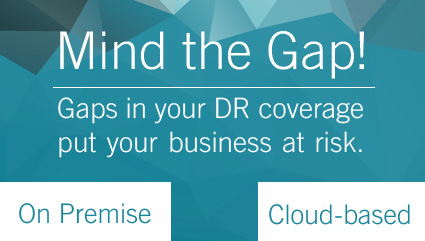Backup Vs. Disaster Recovery; Who should be priority?
In recent surveys it has been highlighted that Backup projects are high on the agenda for many CIO’s in 2016, and a large number of these projects will be looking at how a Cloud solution can help them towards their ideal Backup strategy. What about Disaster Recovery, have CIO’s forgotten about DR or have they lumped the idea of Disaster Recovery into the Backup strategy?
To answer these questions it is important to understand that Data Backup’s, replication and Disaster Recovery are 3 very different pieces to a Business Continuity and Availability Plan. This Business plan is designed with 1 goal in mind, getting your business up and running in the event of a disaster as quickly and effectively as possible. With recent data showing 76% of companies experienced downtime in their datacentres and the predicted cost of downtime running into the £1000’s per minute making sure you have the full Backup and Recovery plan in place could save the company from serious financial ramifications.
What Is Backup?
To learn backup vs disaster recovery, start with the basics. What is backup? In short, backup is copying your files to another disk. This can be through a tape backup, a secondary computer, or a cloud hosted backup solution.
It is important to have a backup solution in place. Backup protects your data in case of theft (a single laptop to office break-ins), employee accidents (deletion of an important file), or a technical issues (crashed hard drive). With this protection, you can access a copy of your data and restore it easily.
What Is Disaster Recovery?
Disaster recovery is similar to backup but is used for larger instances. A complete image of your disk drives and servers are mirrored. The image allows you to restore the system quicker than reinstalling an OS and copying files.
Don’t get caught up on the term “disaster” and believe it has to be major incident. A disaster can be your entire network crashes and your employees can no longer work for the day (or longer). With a disaster recovery plan, your employees can continue to work by using the mirrored system. With your employees set, your IT works on fixing the problem with the original network.
While a backup is important, your company should upgrade to a disaster recovery plan to insure full protection. The first step is storing your backups off-site. You can do this through a cloud hosted backup or by storing your secondary copies in another location away from your servers. We recommend using a cloud backup system as it is the most reliable solution and easy to access. It has been reported by Gartner that 50% of all tape backups fail to restore.
In the case of a disaster time is critical. Therefore, the major advantage of a disaster recovery plan is that it images your disk drives and servers. With a mirror of your system, you are able to recover faster and not wait for data to be copied. Virtual servers with the correct disaster recovery installed can be restored within an hour, if not minutes.
As always, test and check your backup system on a regular basis to insure it is working. Also test if your data can be easily transferred quickly and accurately. Run through test scenarios to ensure everything is working properly. If it is not, then take the time to fix it before a real emergency happens.
Neither data backup nor data replication constitute a Disaster Recovery plan. The purpose of data backup has to do with recovery but not disaster recovery. Replication has everything to do with disaster recovery, but there are many more components to a DR plan that should be considered when looking at how your data is protected from a system failure, power loss or human error.
The truth is that CIO’s have not forgotten about Disaster Recovery, they are currently looking at how new emerging technologies such as Veeam Cloud Connect or Microsoft Azure’s Backup solutions can enhance their tired Backup solutions and enhance their Disaster Recovery plans. To discover if you have a gap in your Backup and Recovery take a look at the infographic below or request a call from one of the thinkS3 team.










